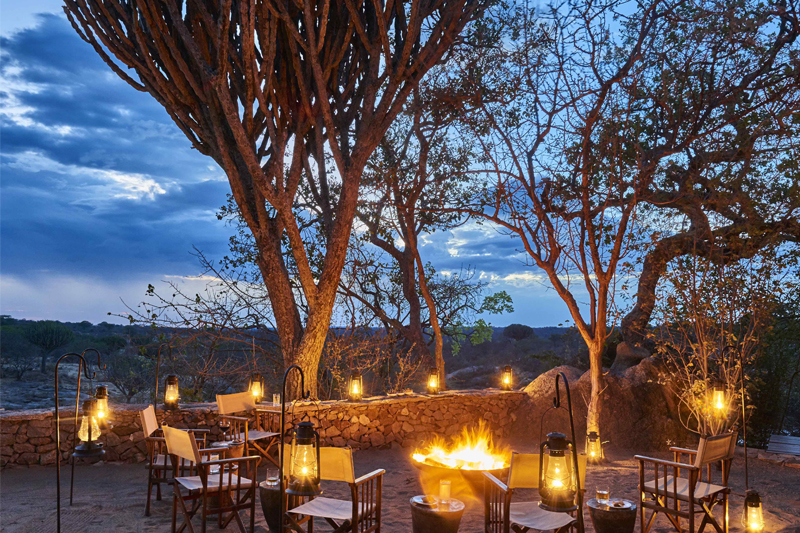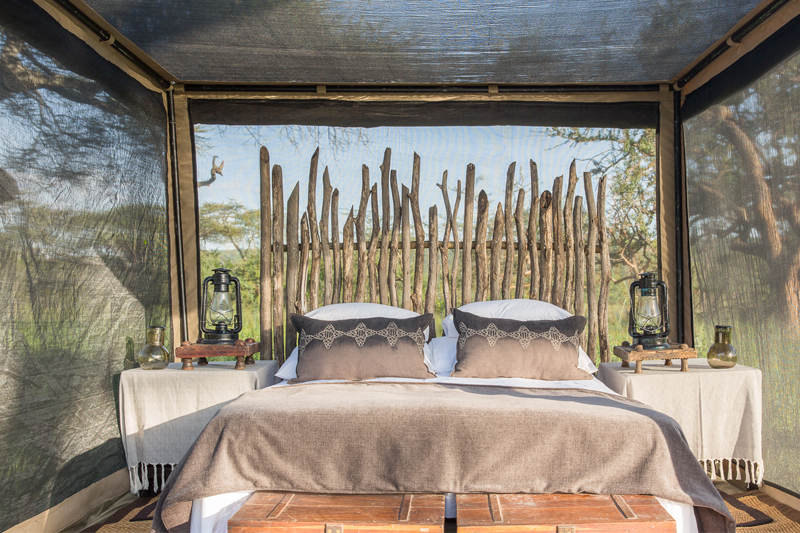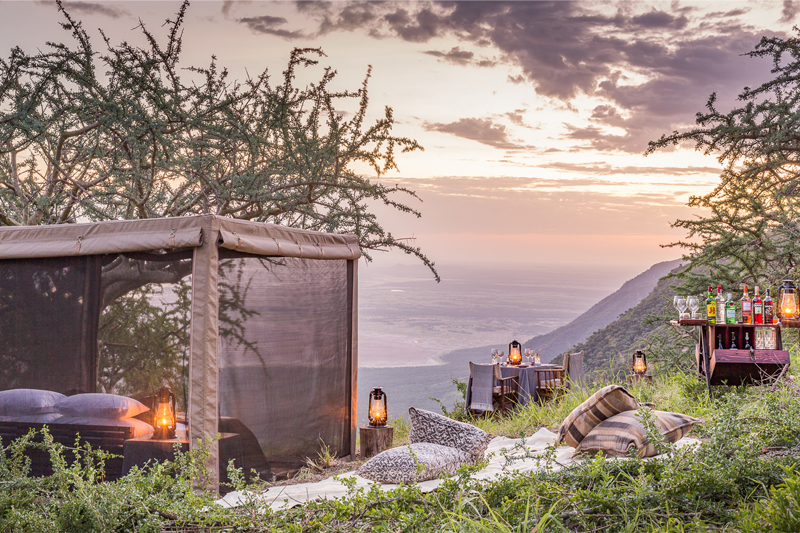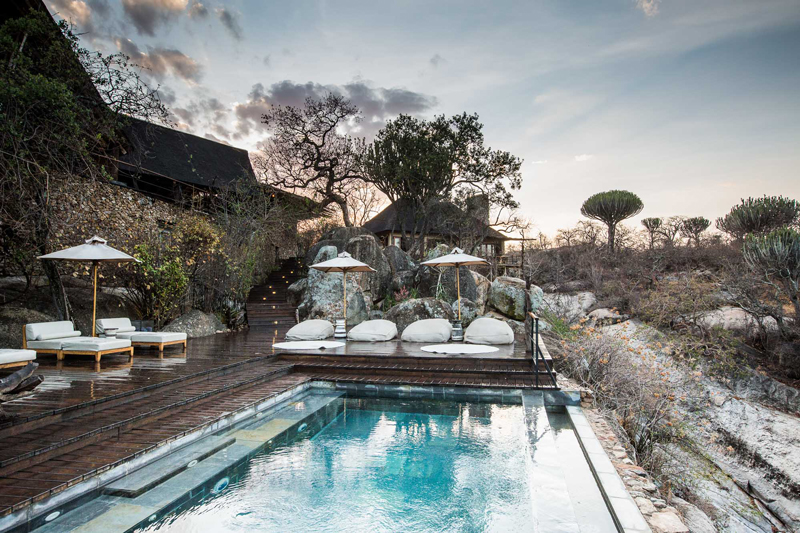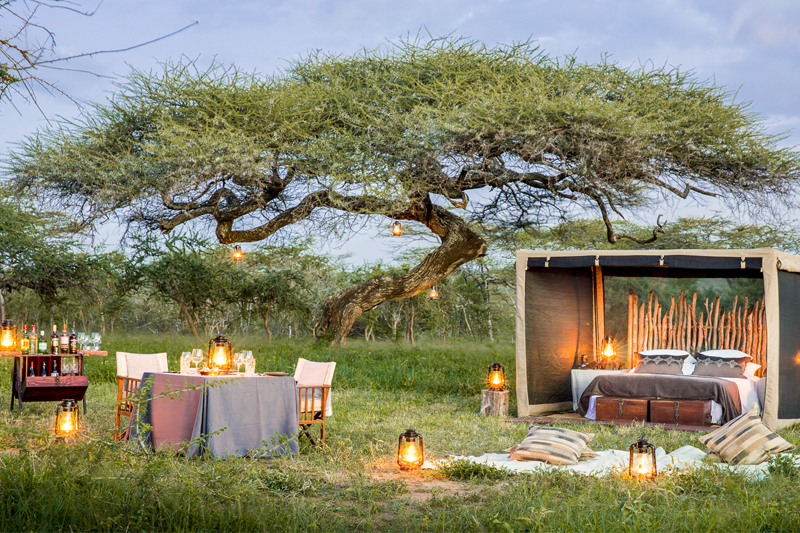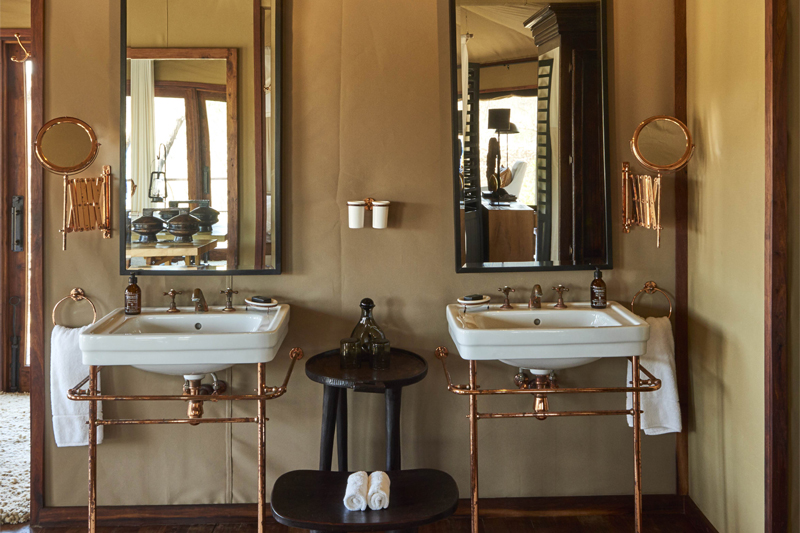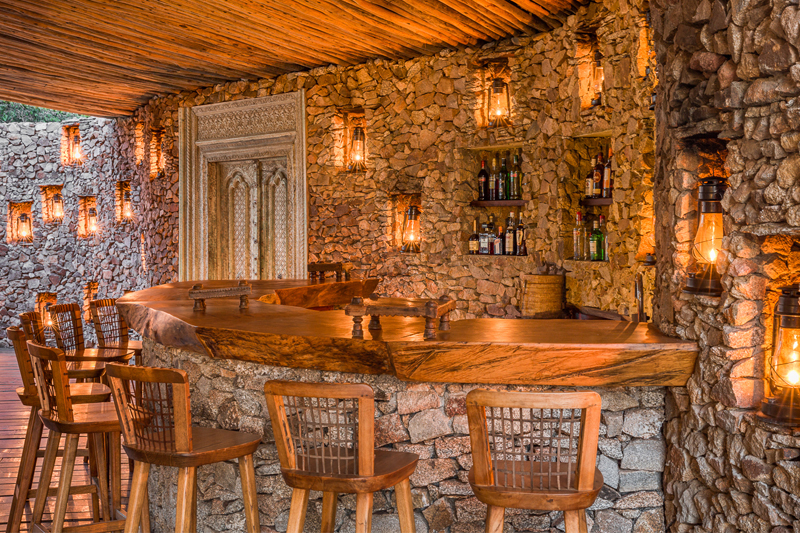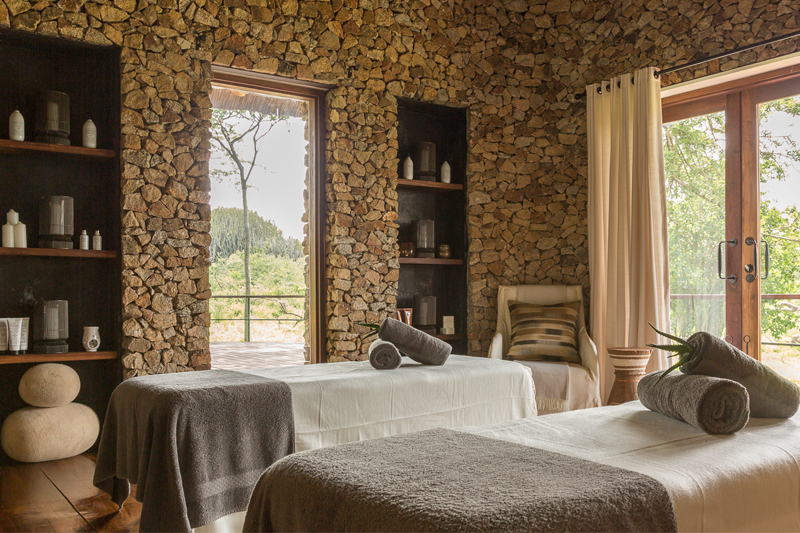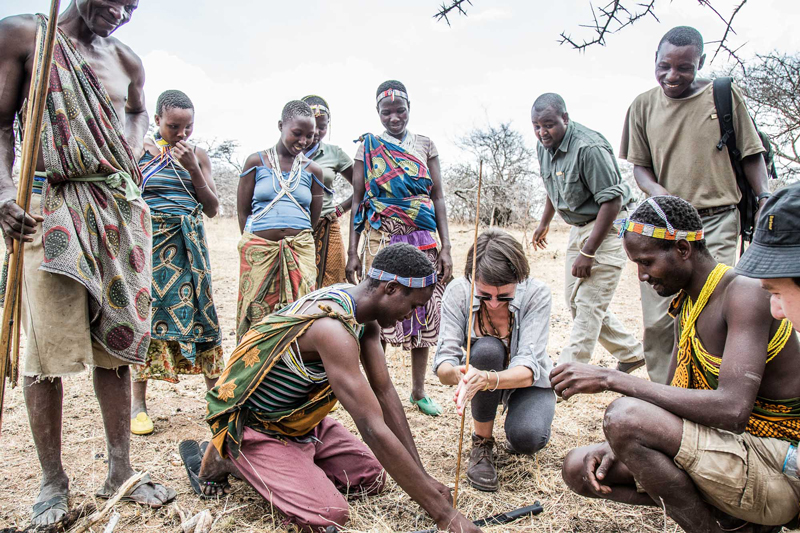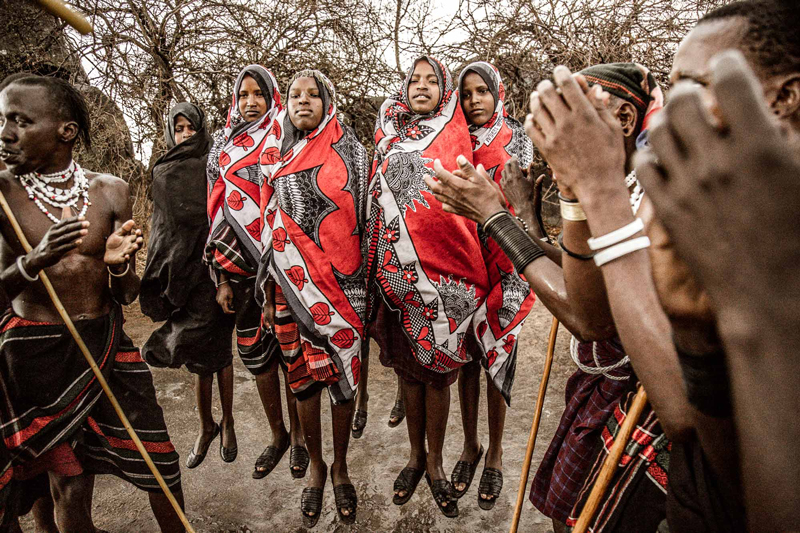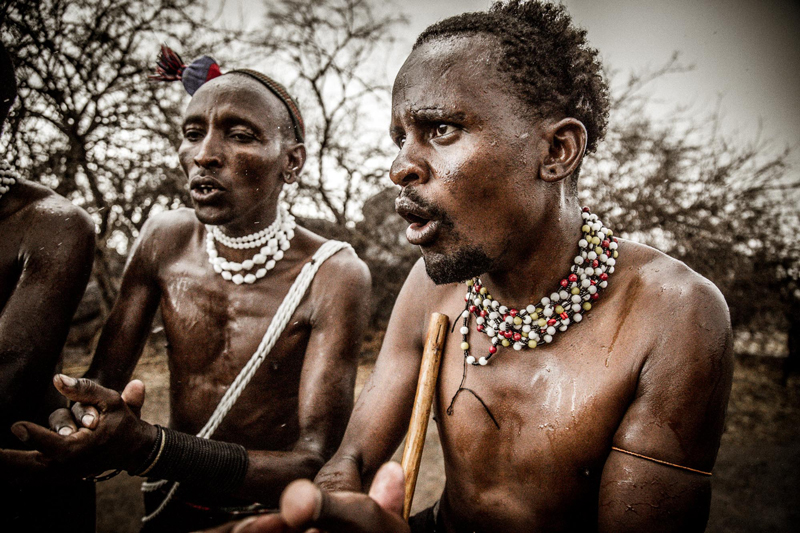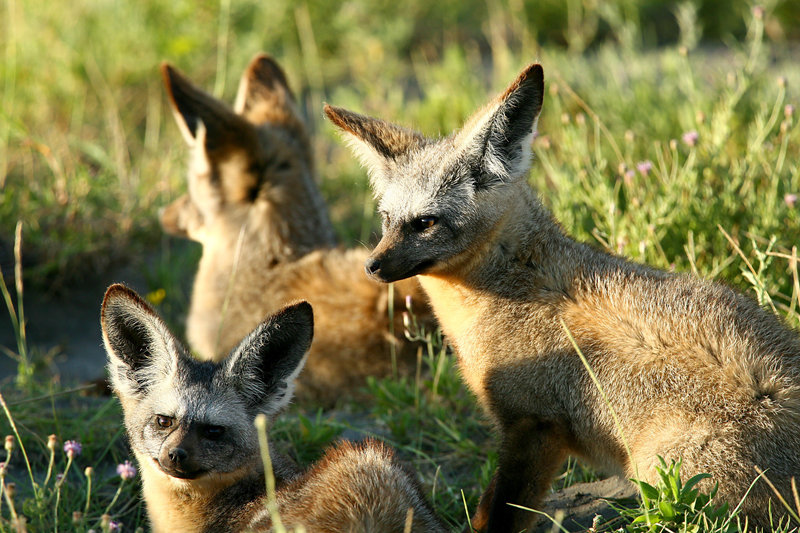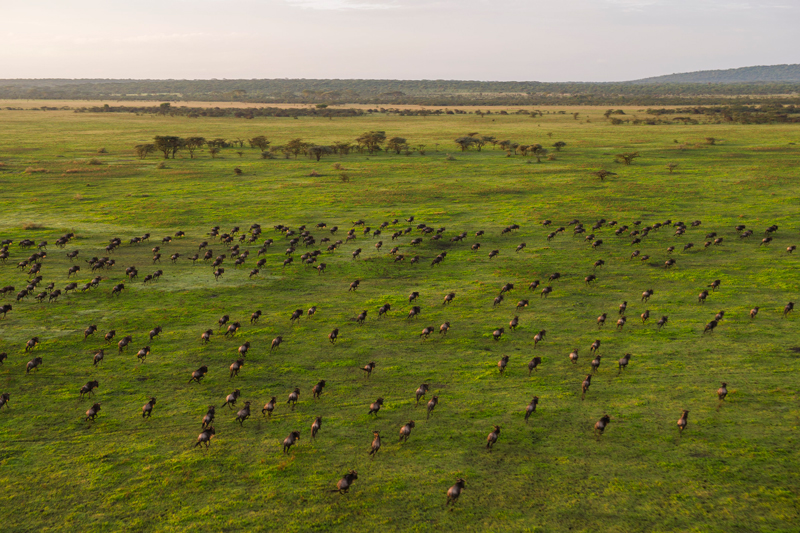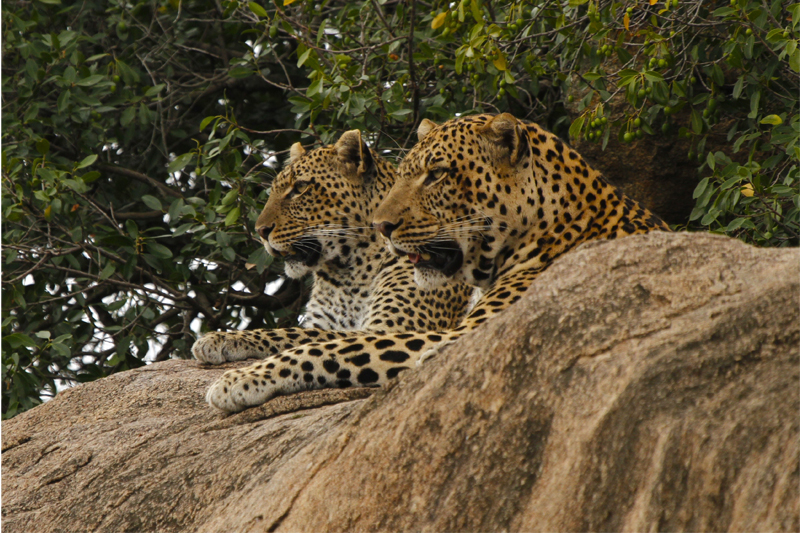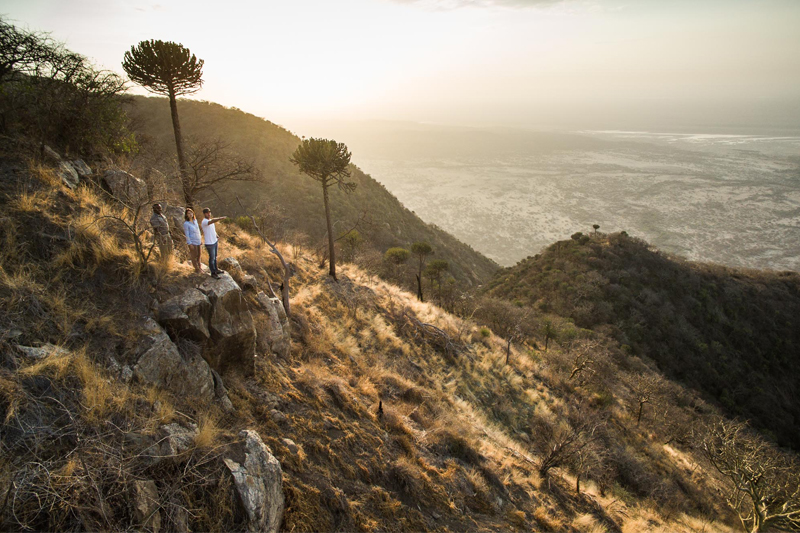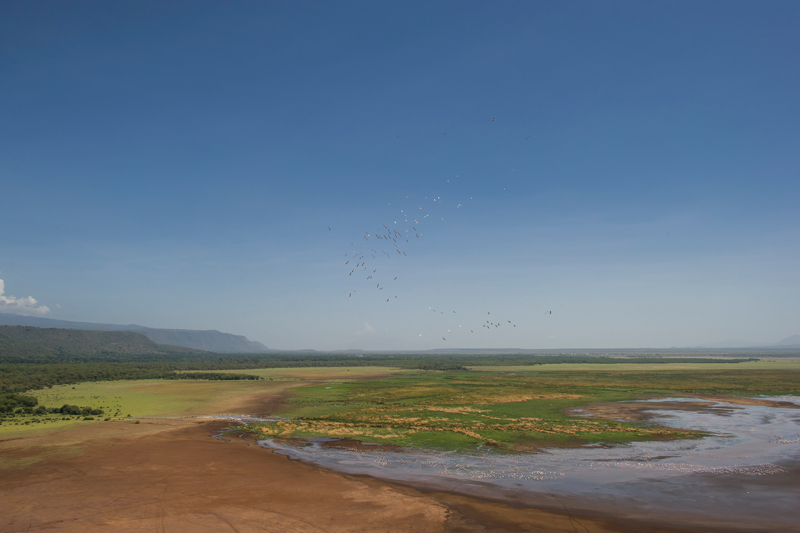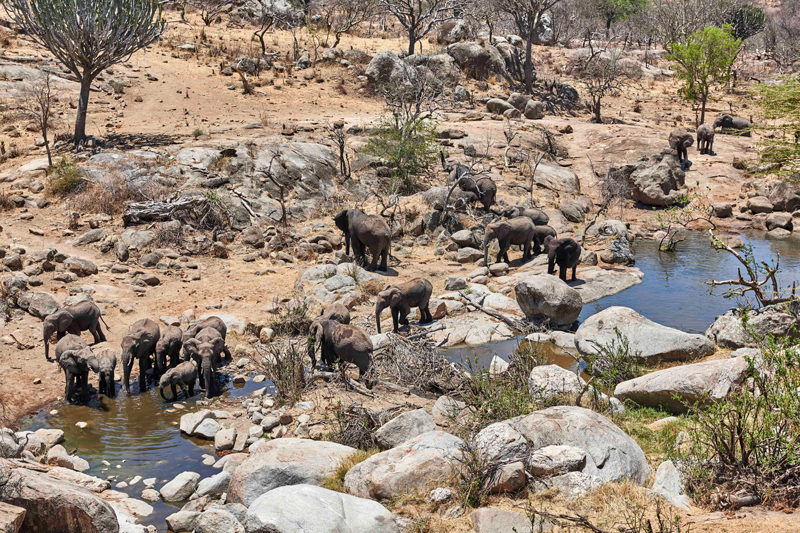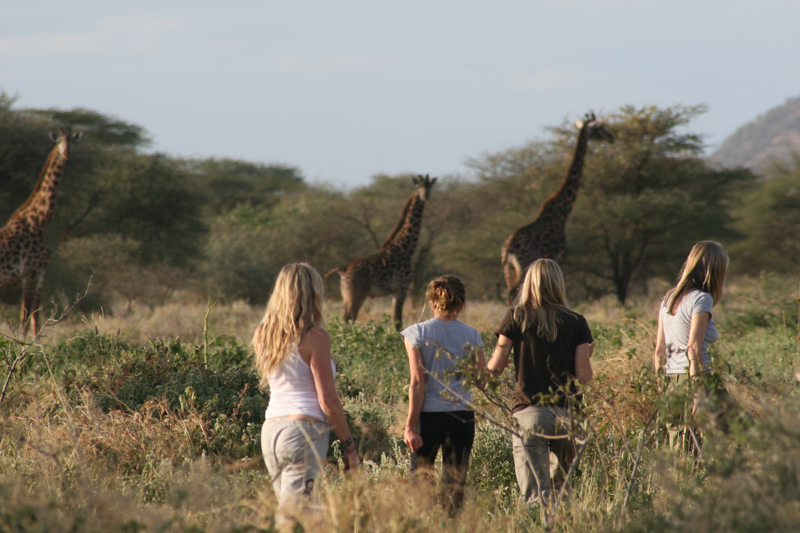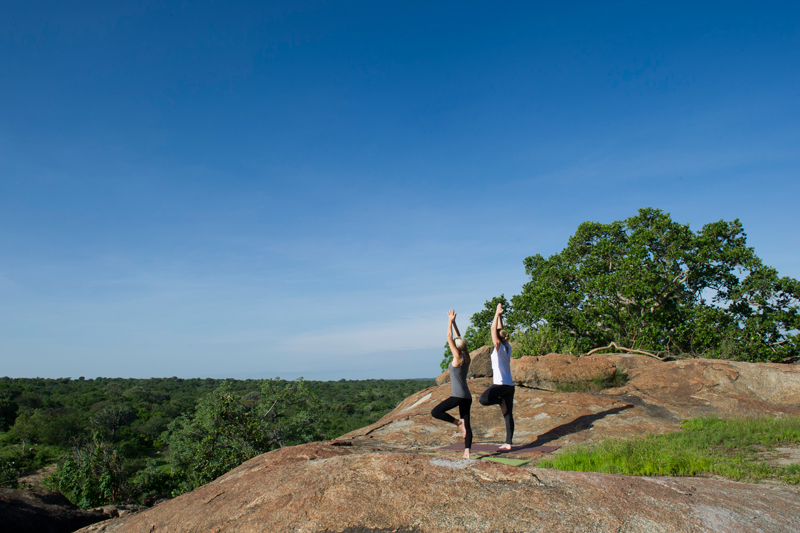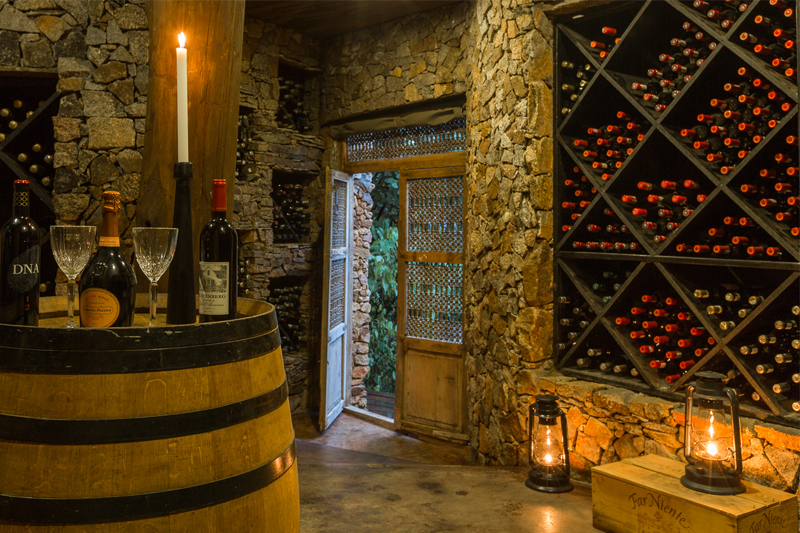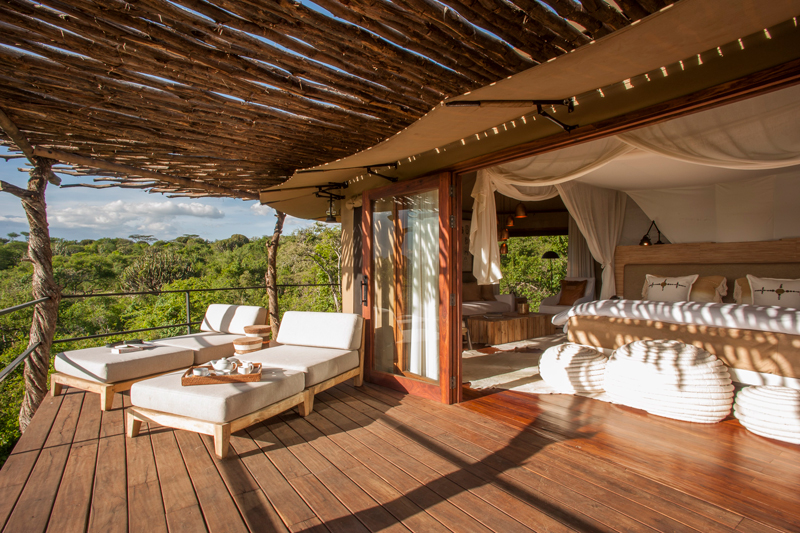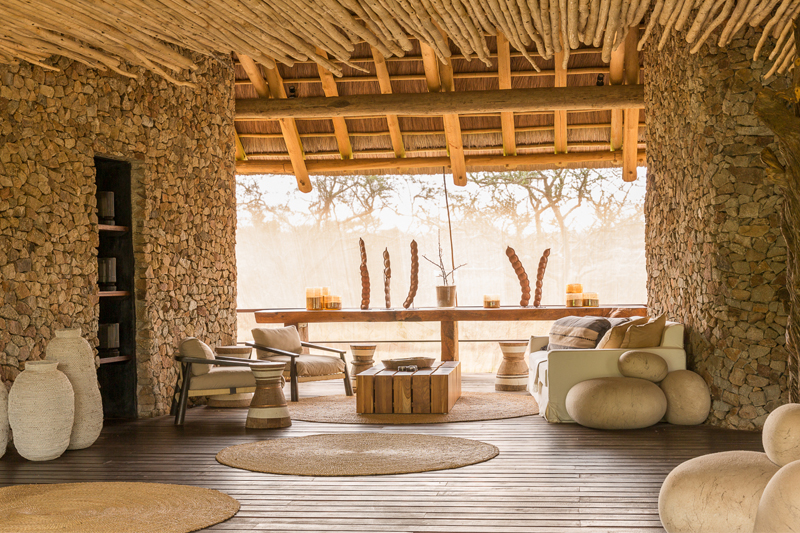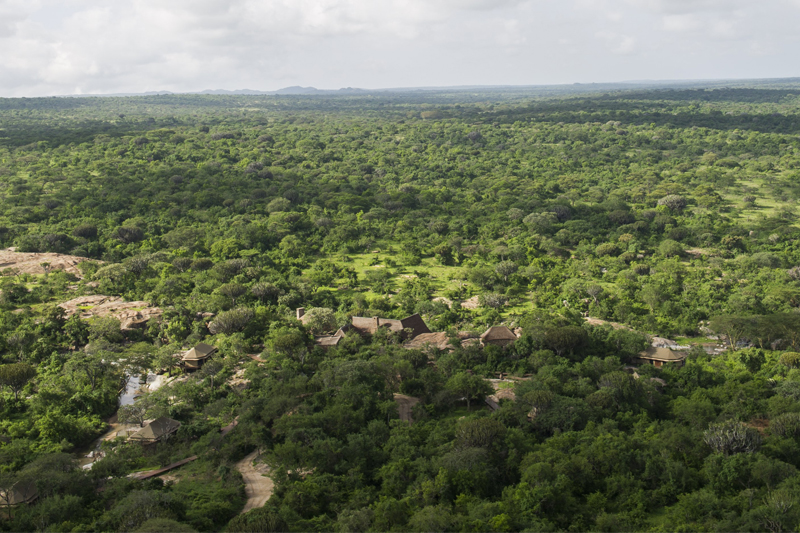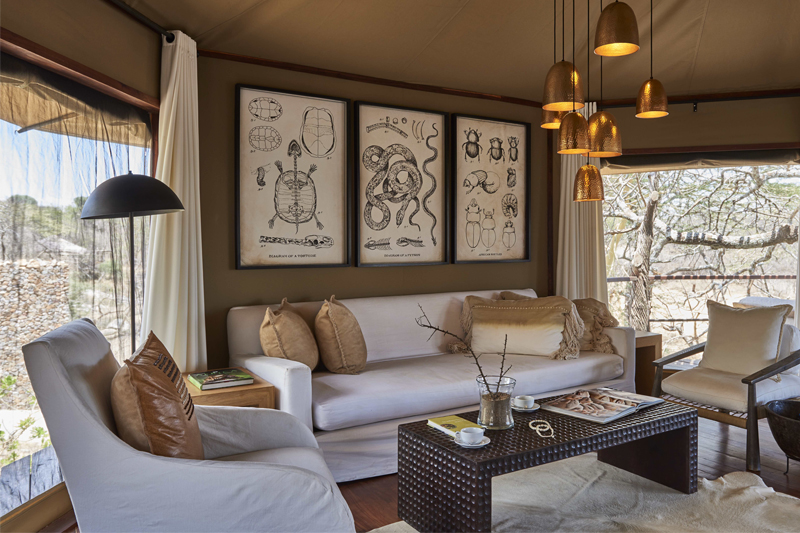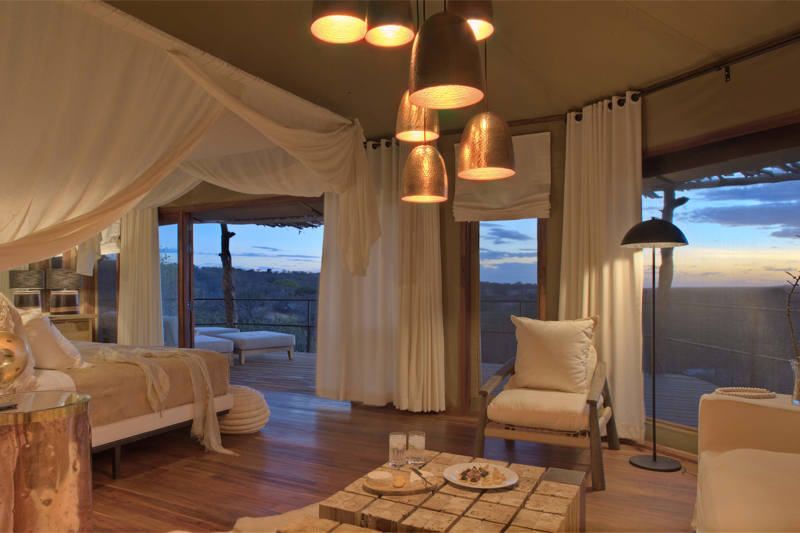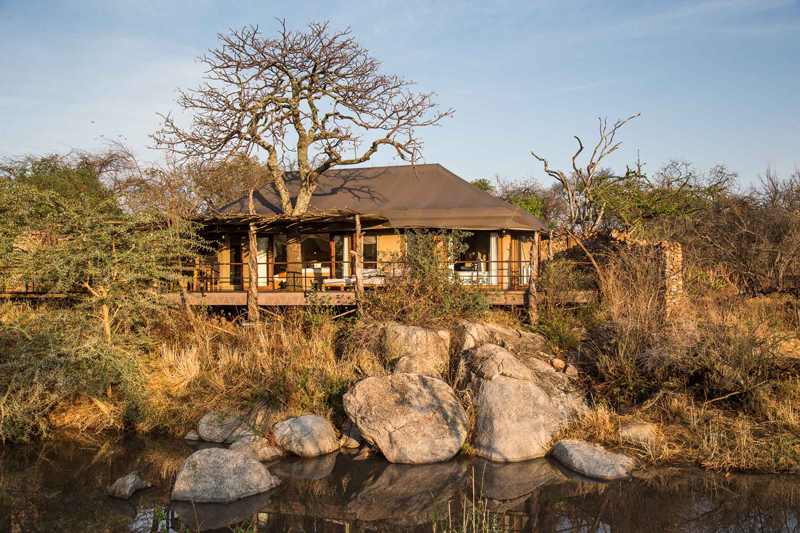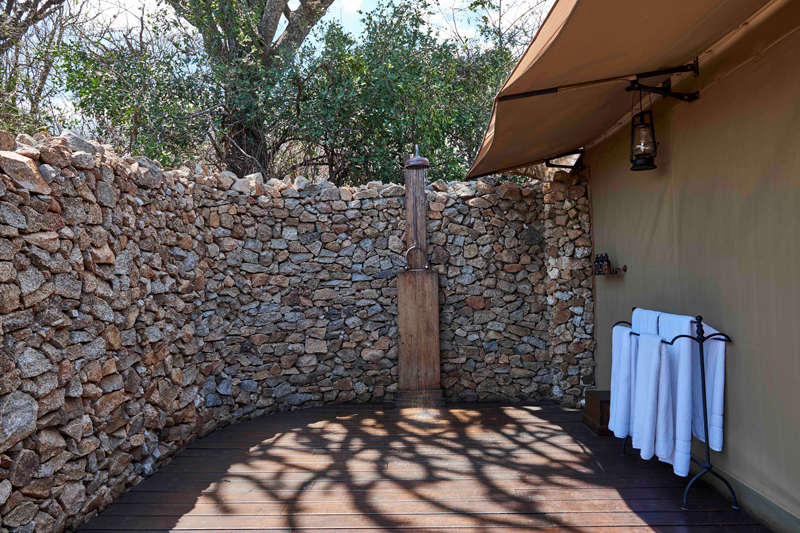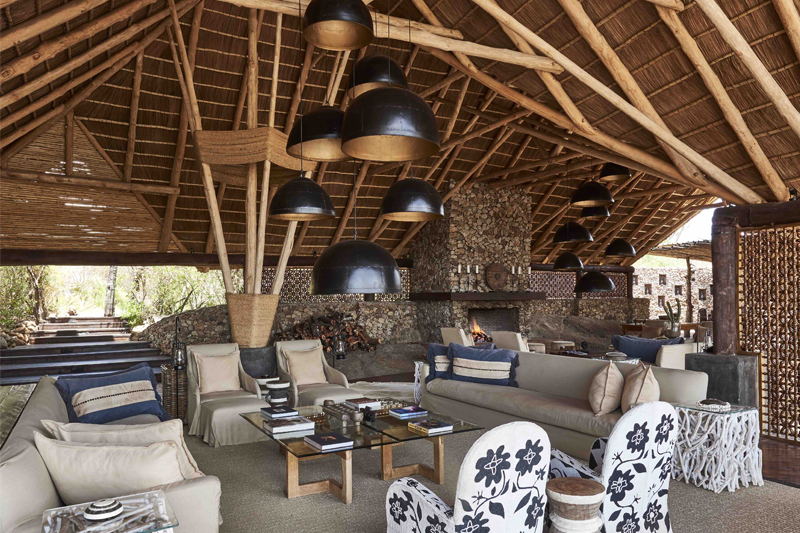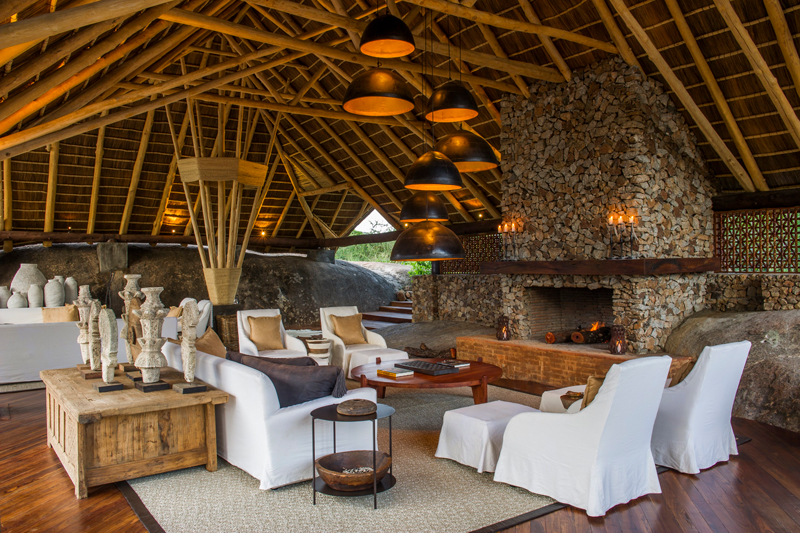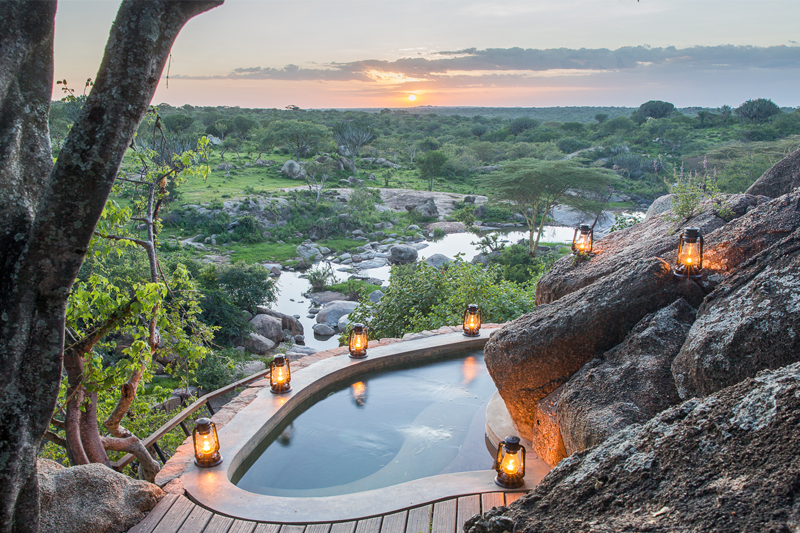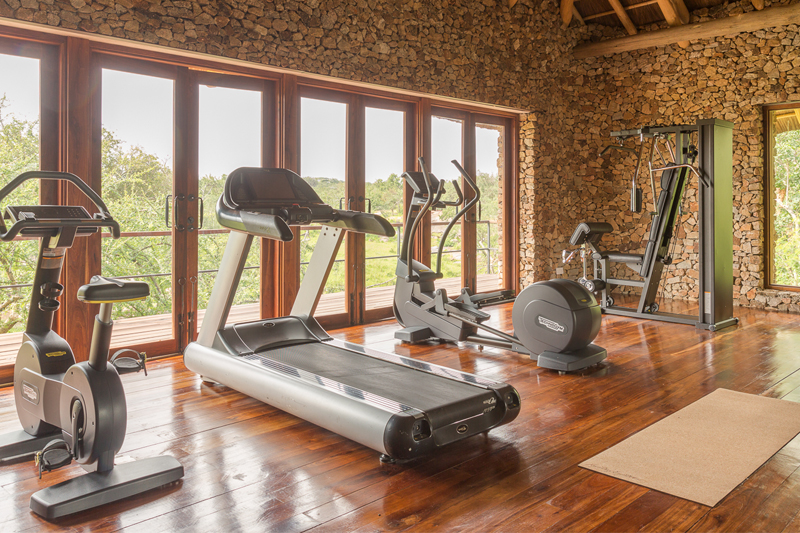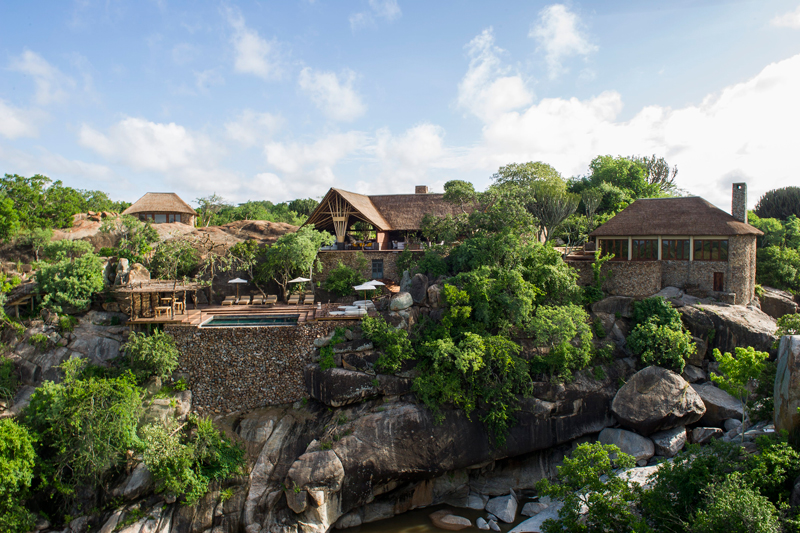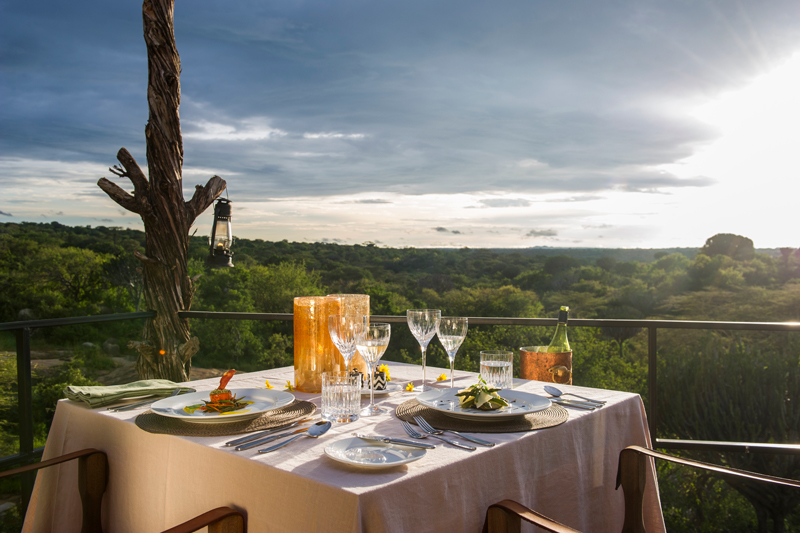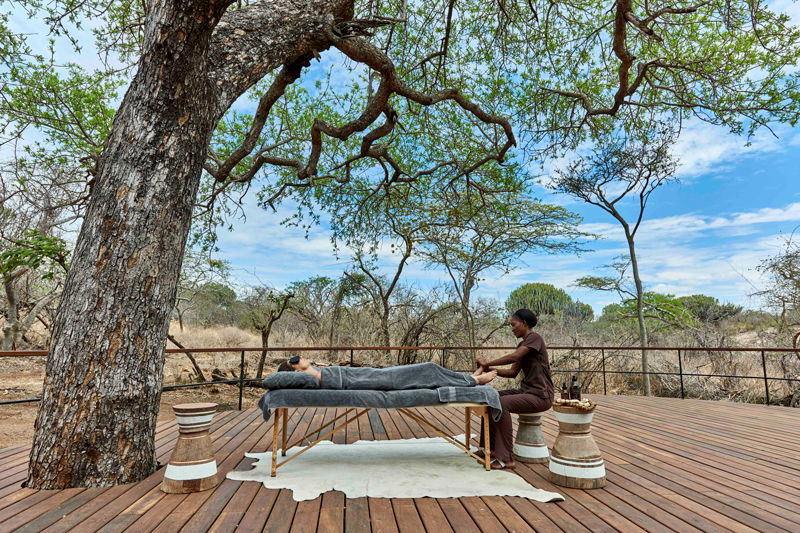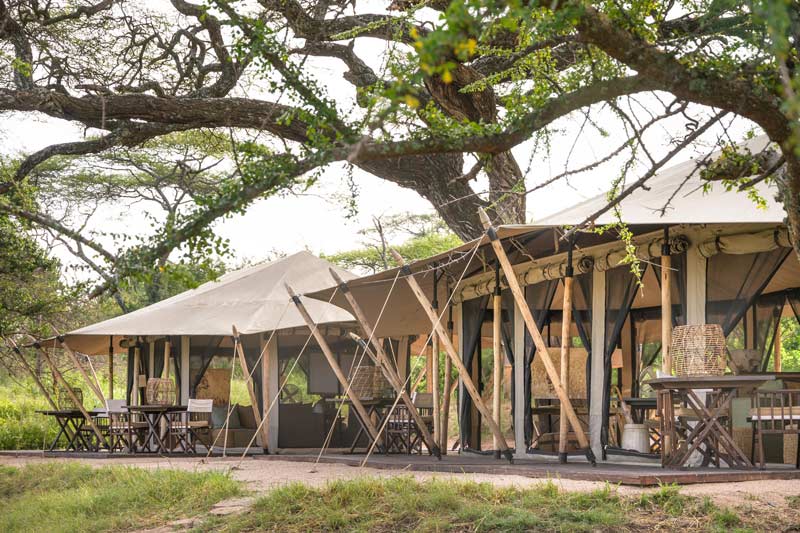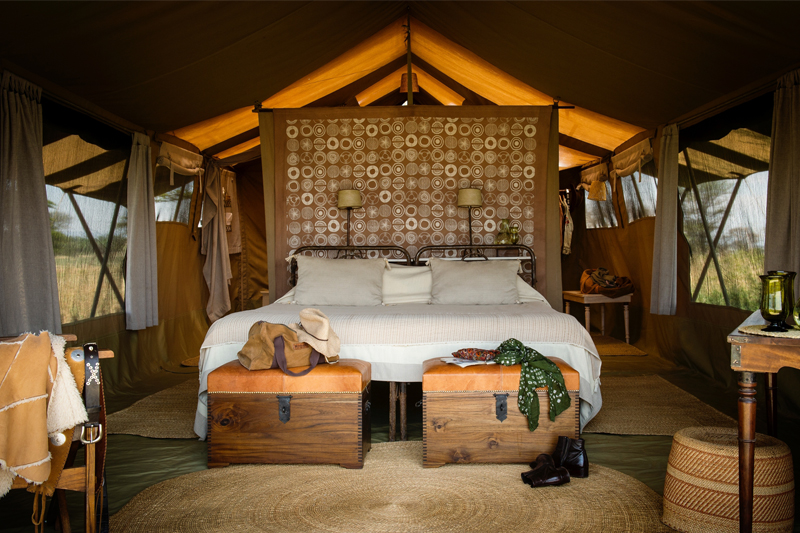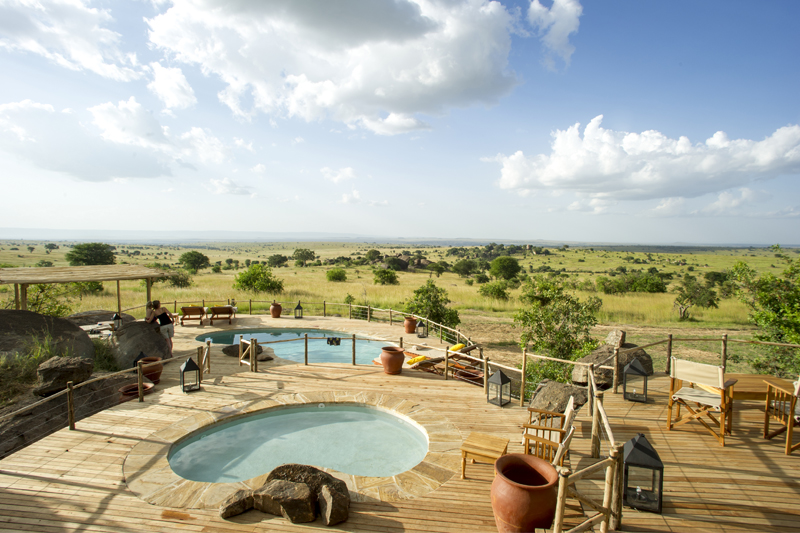Mwiba Lodge
Mwiba Lodge is located in the heart of the private Mwiba Wildlife Reserve located just south of the Maswa Game Reserve and just outside the south-west corner of the Serengeti National Park.
Mwiba Lodge is a luxurious and sophisticated property which can rival the very top lodges in East Africa. It was the feel of a luxury South African Lodge, with impressive, spacious and private rooms which all directly overlook the bush. The central areas are very comfortable and there is plenty of opportunity to relax. The management are very attentive and the staff are friendly and welcoming, though this is a property where guests naturally keep themselves to themselves a little and enjoy the exclusivity of the location and activities. The location outside the park is fantastic for offering exclusivity and some varied activities, including a brilliant bushman walk with Hadzabe hunter-gatherers, but it does mean a longer drive to reach the core game viewing areas of the southern Serengeti. If your priority is spending time out on the plains with the migration herds (December to March) or photographing big cats, you need to be aware that access is not immediate. In terms of a 5 star property in the Southern Serengeti, Mwiba Lodge is the only option!
Rooms
Accommodation at Mwiba is for up to 22 guests in 10 luxury tented suites, privately set through the bush and accessed via low wooden walkways. Each suite has king/twin beds, a small lounge area and huge windows to the fore looking onto your private viewing deck with superb views of the bush. The large en suite bathrooms are designed with traditional style copper fixtures and have large soaking tubs and both indoor and outdoor showers. All of the suites have Evening Breeze cooling system over the bed, a mini-bar, telephone, hairdryer and safe. Two sets of rooms are linked by an external deck (but separated by a stone wall and lockable door) and are therefore suitable for families or friends travelling together.
Central Areas
There is a two level central area with a spacious and comfortable lounge/bar area leading down to an infinity pool below overlooking three springs in the river course. The views are lovely throughout. There is a separate dining area and small wine cellar. Spa treatments are available in their dedicated spa centre and gym.
Facilities
Wi-Fi – Yes
Power for Charging – Yes
Swimming Pool – Yes
Habitat & Wildlife
The Mwiba Wildlife Reserve is an exclusive haven located just outside the the south-west corner of the Serengeti National Park, to the south of Maswa Game Reserve. The habitat is wooded with rolling hills, which are dissected by a number of rivers and streams. The Reserve does not have vast open plains, but the plains are not far away. Game viewing is good on the reserve and is fairly consistent throughout the year, as springs and water pools on the reserve are able to support wildlife during the dry season.
With an area of some 14,000 sq. km, Serengeti is probably the best-known wildlife sanctuary in the world. The ecosystem includes the National Park itself, the Ngorongoro Conservation Area, Maswa Game Reserve and Kenya’s Masai Mara National Reserve, together forming one of the most complex and least disturbed ecosystems on earth. The landscape was originally formed by volcanic activity in the Ngorongoro highlands and it varies from the open short grass plains in the south, to savannah and scattered acacia woodlands in the centre, to extensive woodland and black clay plains in the west, to hilly wooded grassland in the north. Most of the permanent water is found towards the northern and western areas, the lack of permanent water and food in the south being the main reason for the annual migration.
The park is home to approaching 2,000,000 wildebeest, 500,000 Thomson’s gazelle and 250,000 zebra: the largest concentration of plains game in Africa. More than 30 species of herbivores are found here, as well as all the major predators and nearly 500 species of birds.
The southern reaches of the park consist of endless ‘short-grass’ open plains. In the heart of these plains on the border of the Serengeti National Park and the Ngorongoro Conservation Area is an area known as Ndutu, where a series of partial soda lakes and marsh areas are surrounded by woodland. Many of the camps and camp sites in the southern Serengeti are located in this area. To the west the open plains are bordered by the woodlands of the Maswa Game Reserve, and a secondary hub of camps can be found along the edge of woodland, known as the Kusini area. To the east the plains are endless, stretching south-east through the Ngorongoro Conservation Area and north-east towards the Loliondo Game Controlled Area which borders the eastern Serengeti.
The hundreds of thousands of wildebeest, gazelles and zebra congregate on these southern short grass plains from December to April, usually calving around the end of January when the nutritious grass is at its best. During this time the ‘migration’ is restricted to local movements according to rainfall and grazing, though even within the southern Serengeti region the distances are vast. This southern region is exceptional for lion, cheetah and spotted hyaena sightings, all of which thrive on the open plains, whilst leopard, serval, African wild cat, elephant, buffalo, giraffe, eland, topi, jackal, ostrich and impala can also be seen. Wild dogs are making a comeback in the region and are occasionally encountered to the south of Ndutu in the Ngorongoro Conservation Area.
Depending on grazing conditions and water supply, the start of the Serengeti annual migration begins at the end of this period, and the herds begin to march north/westwards, ‘lowing’ incessantly so that the air hums like a dynamo (zebra first, then the wildebeest and gazelles). Lion, cheetah, hyaena and wild dog follow, ensuring that only the fittest survive, while jackals trail behind and vultures circle overhead.
Activities
Activities include open vehicle game drives in the Mwiba Wildlife Reserve (for stays of 3 nights or longer a day trip to the Ndutu region of the Serengeti/ Ngorongoro Conservation Area is included), bush walks with Hadzabe bushman families and night drives. It is also possible to visit a local Datoga Village outside the concession, or to spend a night fly-camping on the Rift Valley escarpment overlooking Lake Eyasi (extra cost).
Seasons
Mwiba Lodge is open all year round. For access to the migration the season is December to March, but game viewing on the Mwiba Wildlife Reserve is good all year round.
Mwiba accepts children from the age of four years and above but the lodge is likely to suit families travelling with older children, due to its design and to make the most of the experience offered. There are two sets of rooms which are linked by an external deck so likely to be suitable for older children rather than younger ones wanting to be under the same roof. An extra bed can be added to a room for children up to the age of 15 years.
Every guest staying in a Legendary Expeditions safari camp contributes a voluntary contribution that goes towards the community projects supported by the Friedkin Conservation Fund (Legendary Expedition’s philanthropic and conservation arm) including education, health and income generation activities for the rural communities in the areas the camps are located.
These community projects are part of a wider, multi-faceted approach to the conservation of the areas in which Legendary Expeditions operates. Much of the Fund’s work focuses on measures to ease human-wildlife conflict. Operating in the buffer zones between the Serengeti National Park and local settlements (Legendary Expeditions manages Mwiba and Maswa Wildlife Reserves which together comprise eight percent of the entire protected Greater Serengeti and Ngorongoro Crater ecosystems) means Legendary Expeditions are well placed to make significant impact in resolving human-wildlife conflict and helping communities to benefit from wildlife and habitat conservation.
2024 will see the role out of the Economic Empowerment Project which has identified income-generating opportunities to sustainably support communities in the southern Serengeti ecosystem centering around honey, poultry and sunflowers. In partnership with Hand in Hand Tanzania, entrepreneurial training will be given in these areas to equip community members with the skills needed to start small businesses and create income streams and further job opportunities.
Efforts also focus on education and the Fund has succeeded in reducing low school attendance through an engaging environmental education initiative, a school nutrition program and the construction of new school infrastructure.
Conservation work includes wildlife monitoring, specifically the collaring of elephants (to address human-wildlife conflict problems) and supporting the Serengeti Rhino Repatriation Project’s rhino monitoring program. Anti-poaching measures are also key and the Fund supports the Tanzanian authorities with anti-poaching teams and aerial surveillance.




